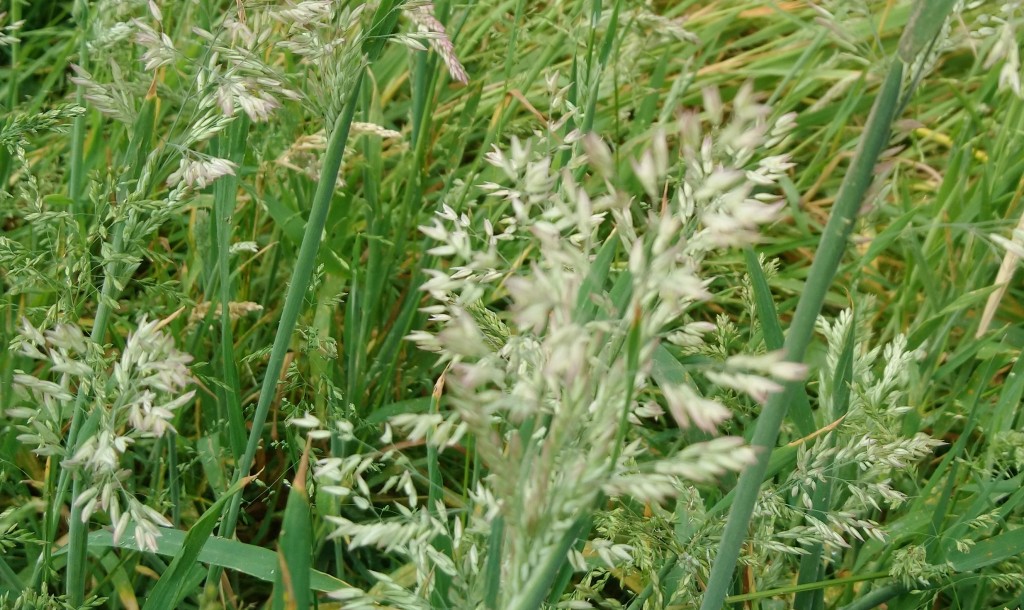
[176] Holcus lanatus, Yorkshire Fog and Other Grasses
Introduction
Holcus lanatus, Yorkshire Fog, is a very common grass and is used here as a typical example of the seven hundred species that have been recorded in the UK. I will not pretend to be able to tell them all apart.
This post takes a general view of Yorkshire Fog and many other common species.
Common names are never very useful with reference to species. Many types of grass have no common name. Holcus lanatus can also be called Tufted Grass, Meadow Soft Grass or (Common) Velvet Grass.
Taxonomy
Kingdom – Plants
Division – Vascular Plants
Class – Angiosperms (Flowering Plants)
Order – Poales
Family – Poaceae
Subfamily – Pooideae
Supertribe – Poodae
Tribe – Poeae
Subtribe – Holcinae
Genus – Holcus
Scientific Name – Holcus lanatus
See text for other species.
Name
I would hazard a guess that this species was first identified in the County of Yorkshire in England, and that its appearance is vaguely reminiscent of fog. Holcus is the Latin for a sort of grain crop, coming from Ancient Greek holkos meaning attractive or trailing. Lanatus is Latin for woolly.
The etymology of other species is considered below.
Grasses
I have said a little about the order Poales and the family Poaceae in [068] Hanging Sedge and [074] Crimson Fountaingrass.
We have also seen [097] Pampas Grass and [146] Blue Fescue and more spectacular ornamental species are coming –
[229] Chinese Silver Grass and [263] Bamboo.
There are of course some grasses grown as cereal crops. [177] Barley comes next and we will see [345] Wheat and [364] Maize later.
Two other very tall species, only seen near water are [261] Common Reed and [349] Bulrush.
That leaves everything else – meadows and pasture for livestock, most common land, parks and gardens, football grounds, lawns, golf courses and bowling greens, and much, much more.
There are many species that I have seen and not identified and you won’t find any species included here that I have seen on bowling greens or golf course greens. (I think the USA would call them putting greens or putting surfaces.)
Yorkshire Fog
Holcus lanatus is native to Europe and nearby areas and has naturalised in North and South America, Australia, New Zealand and East Asia. It is considered invasive in Australia and the USA.
It’s a pretty typical sort of grass, with a glaucous colour, much taller than the grass you would find in a lawn. Its inflorescences are quite large. I won’t attempt to describe what makes it different to other grass species.
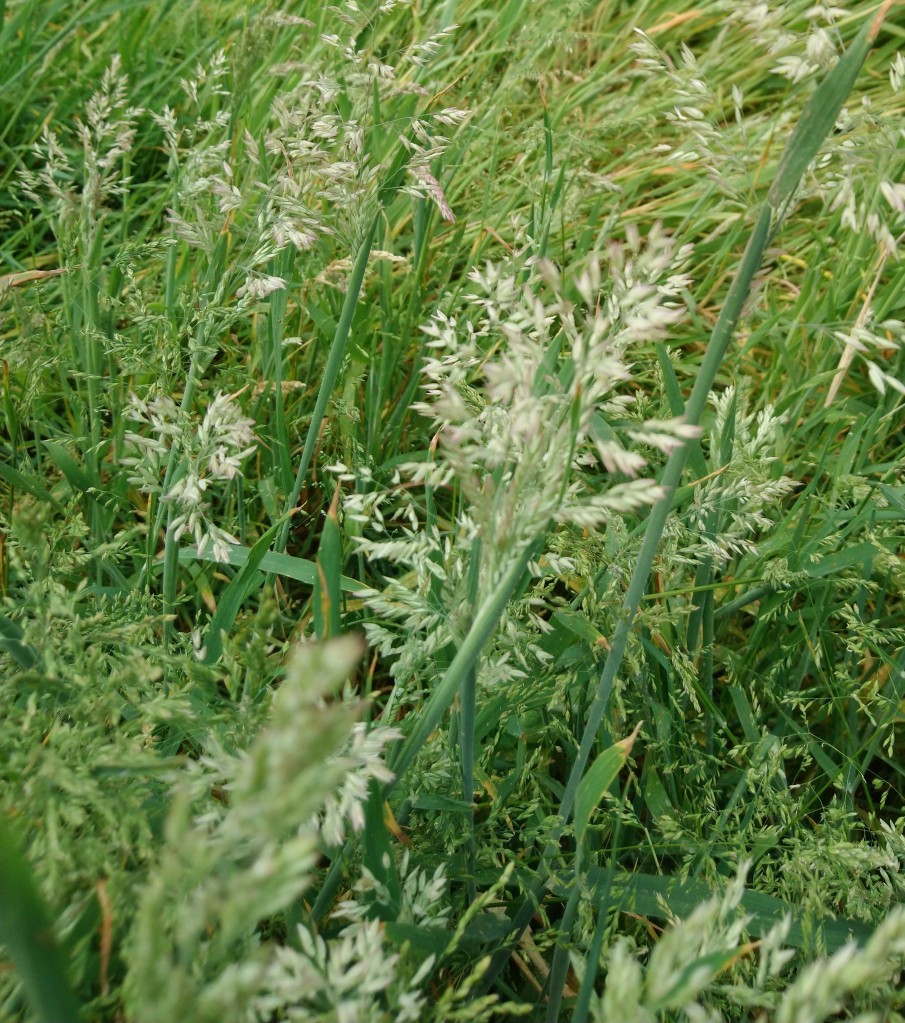
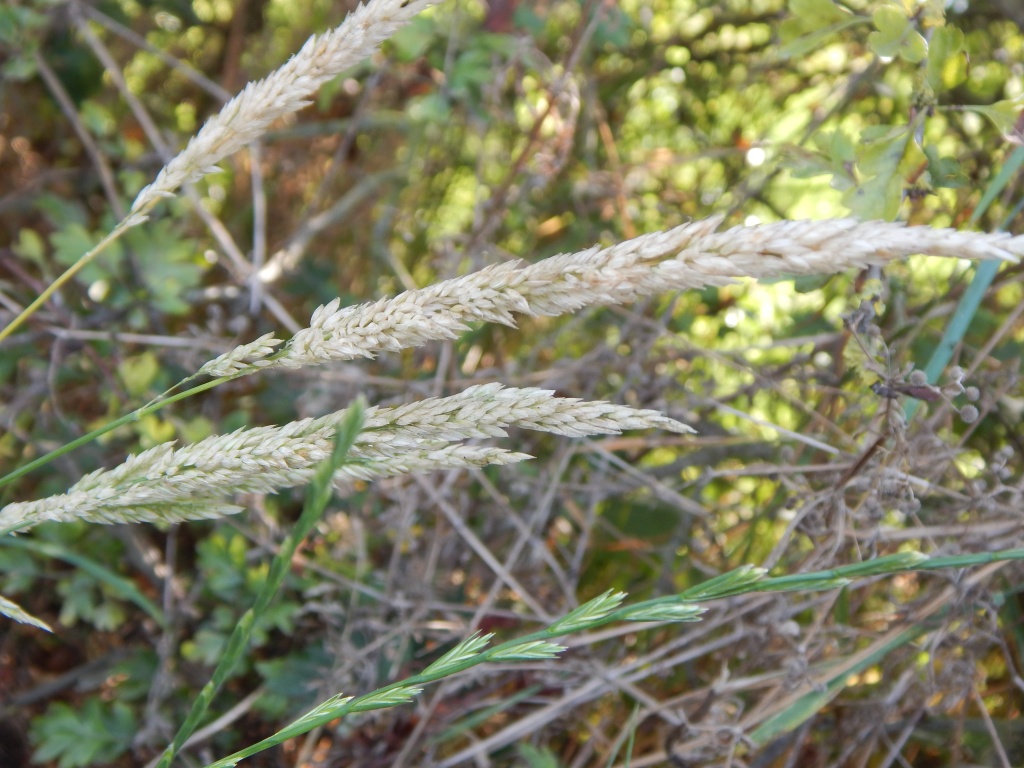
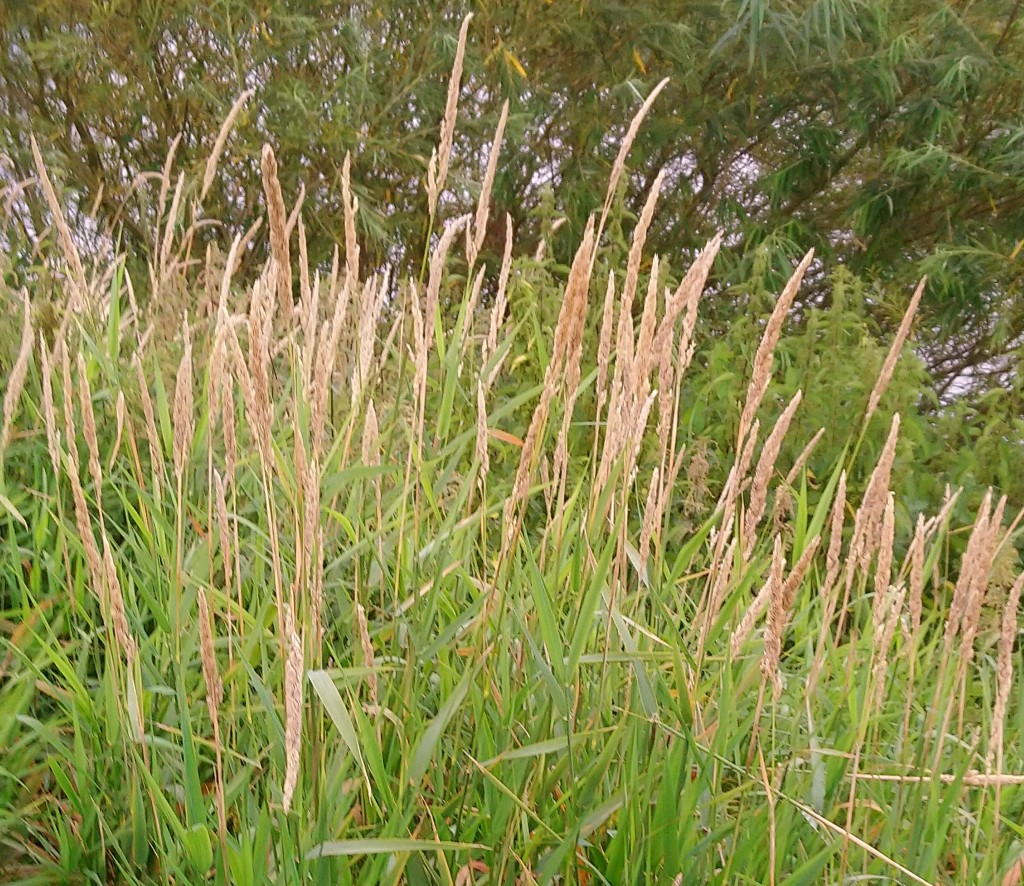

As for all grasses it spreads by runners – stems that grow horizontally along the ground and put out roots.
Other Species
I will list a few more species that have been identified by my app, with some pictures and some notes.
I can’t guarantee that the pictures match the species. (This includes the Yorkshire Fog pictures.)
- Timothy, Phleum pratense.
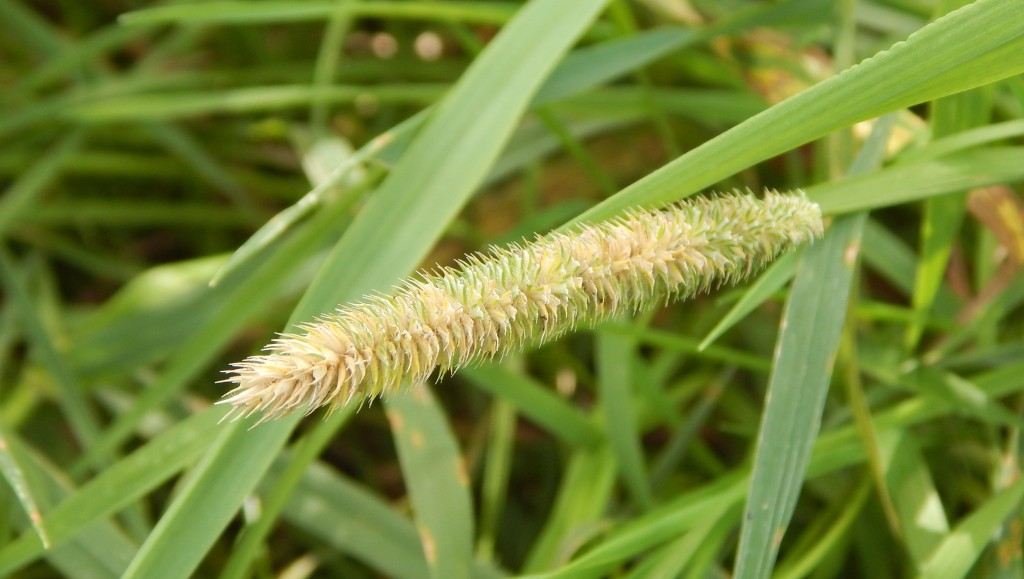
A common grass found in Europe, probably named after Timothy Hansen who introduced it to the USA in the Eighteenth Century, where it was widely used for cattle.
Ten species of Phleum are found in Britain. Phleum is Latinized from Greek phleos, a type of grass. (Pratense, of course, means meadow.)
- Squirreltail, Hordeum jubatum.
Barley, Hordeum vulgare, is coming next. Several other species of grass are called Squirreltail.

- Reed Meadowgrass, Glyceria maxima.
Native to Europe and parts of Asia, this species is found in wet areas such as ponds.
Seven species of Glyceria are found in Britain. The word glyceria is probably derived from the Greek glyco- meaning sweet.
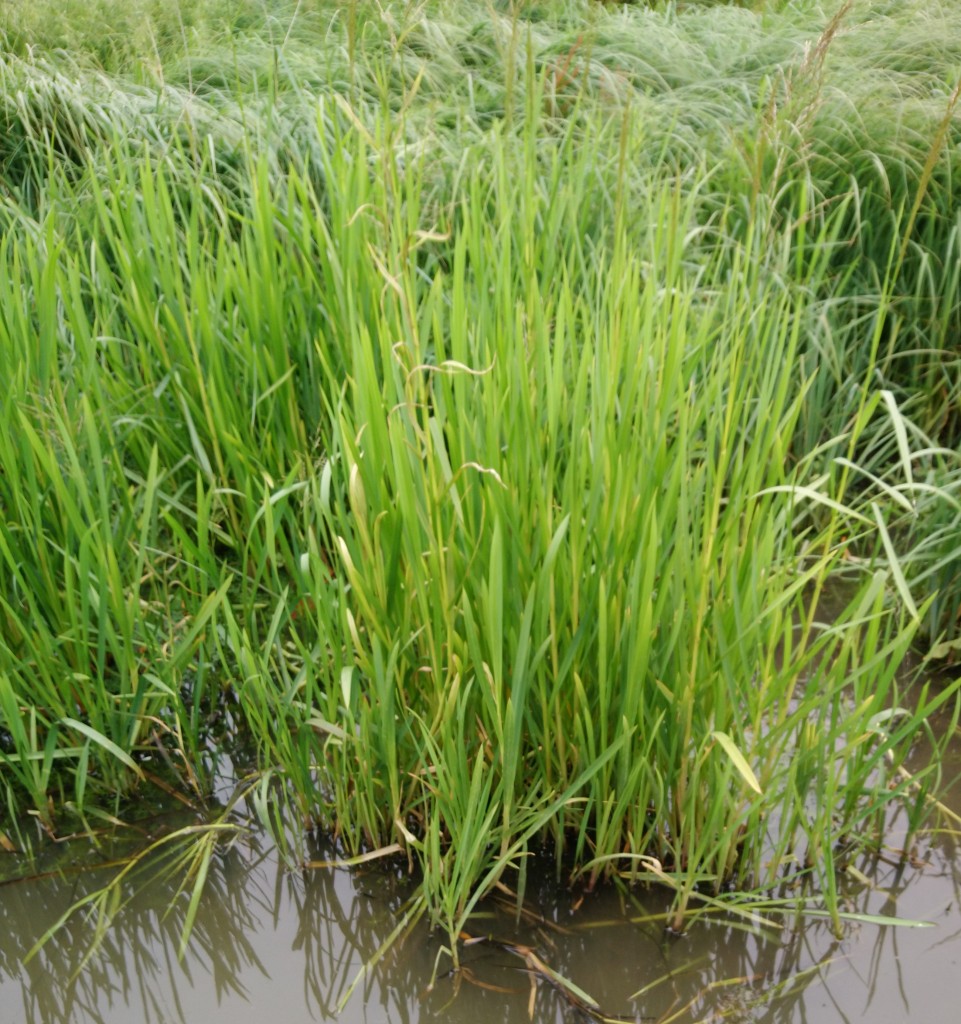
- Smooth Brome, Bromus inermis, and Great Brome, Bromus diandrus.
Bromus inermis, found in Europe has about twenty common names (all including ‘brome.’)
Bromus diandrus is native to the Mediterranean but has been widely introduced elsewhere.
27 of the three thousand species of Brome are found in Britain. The common names come from the Latin from Greek roots for a type of grass.
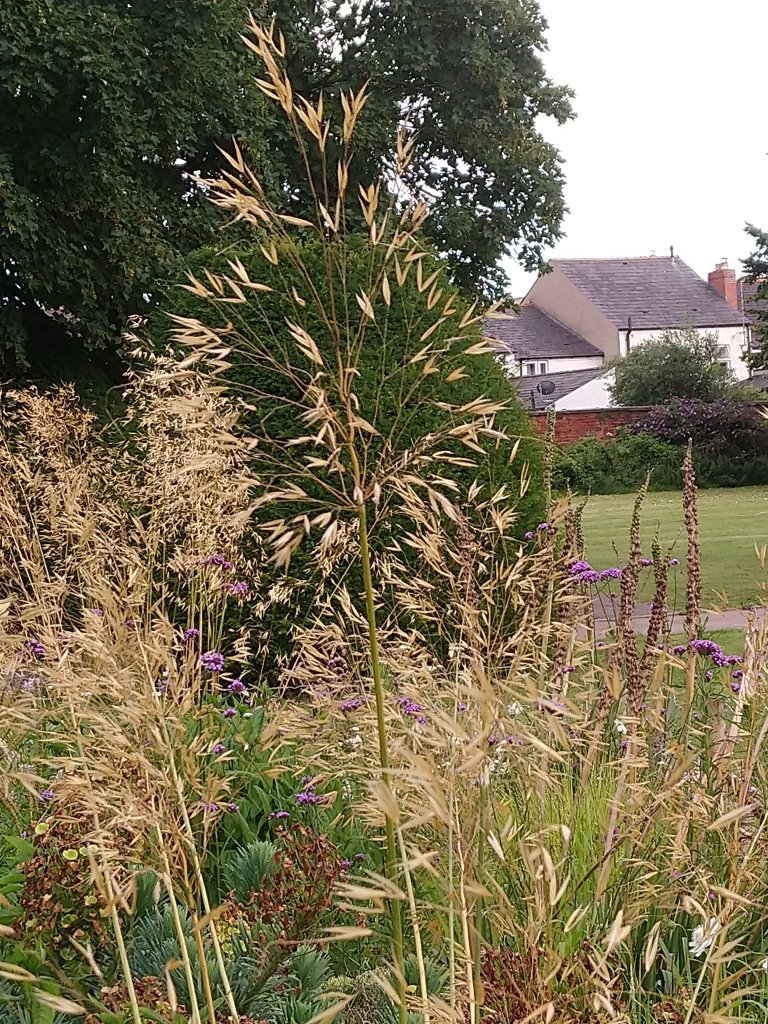

- Colonial Bent or Common Bent, Agrostis capillaris.
Native to Eurasia, this is a common species in meadows, agricultural areas, roadside verges and open grassland.
There are hundreds of species of Bent grass and hundreds more have recently been reassigned to other genera. They include types of grass used for lawns and all parts of golf courses. About twenty species are found in Britain.
Bent is an Old English word from Germanic roots for reeds or rushes.
Agrostis, from the Greek for a forage plant is ultimately derived from agros, a field.
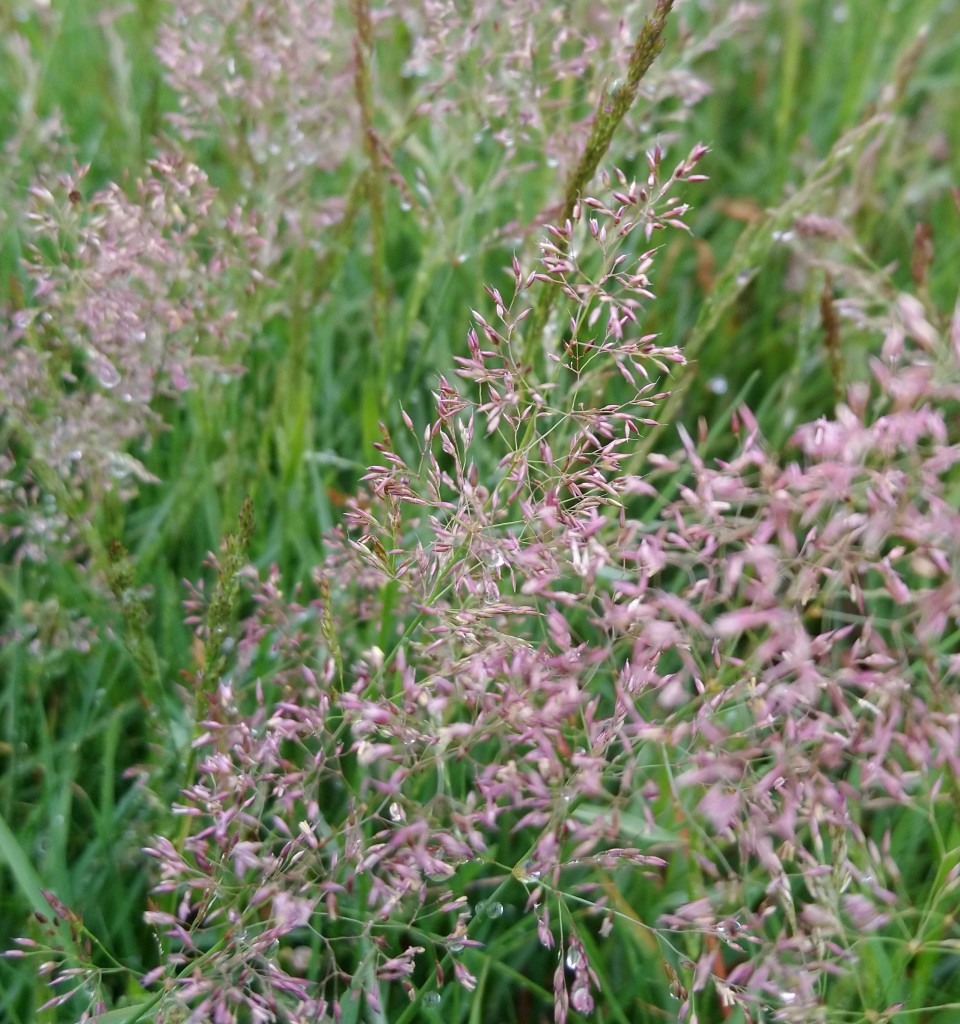
- Orchard Grass, Dactylis glomerata.
Another widespread common grass in temperate Eurasia, the only Dactylis species. Its scientific name looks as if it means ‘fingers, closed in a ball.’
- Reed Canary Grass, Phalaris arundinacea.
A tall grass found throughout the Northern Hemisphere besides water.
One of eleven species of Phalaris found in Britain. Its name in Latin and Ancient Greek was Phalaris. Arundinacea means cane-like.
- Tall Oat Grass, Arrhenatherum elatius.
A tall, common and widespread grass, one of three species of Arrhenatherum found in Britain. I can’t make sense of arrhenatherum but elatius means taller.
- Tufted Hair Grass, Deschampsia cespitosa.
Common and widespread, one of four British species from this genus, often called tussock grasses.
I was going to guess that Deschamps was French for fields but the name actually comes from a French naturalist Louis Auguste Deschamps (1765-1842). Cespitosa means tufted.
- Bermuda Grass, Cynodon dactylon.
Widespread and common, not native to Bermuda, widely cultivated.
Cynodon means canine teeth from cyno-don.
